Fort McPherson
Maxwell,
Nebraska
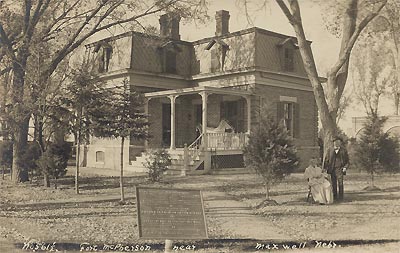
Originally known as Fort Cottonwood. First Located in Cottonwood Canyon.
Later
Moved Closer to the Town of Maxwell, Nebraska
Now a National Cemetery
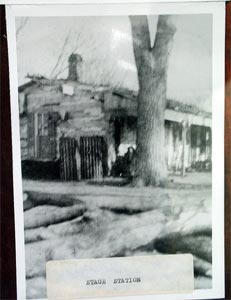
Stage Station at Cottonwood Springs
In October of 1863, Lieutenant Eugene
Ware directed men to cut logs of cedar in Cottonwood Canyon, for the purpose of
making an outpost. Major George M. O'Brien selected the location a month before
and had dubbed the outpost
"Cantonment McKean", after the Commander
of the military district but changed the name to Fort Cottonwood
when the
construction actually started. A post was direly needed to break the 350 mile
stretch between
Fort Kearney and Fort Laramie.
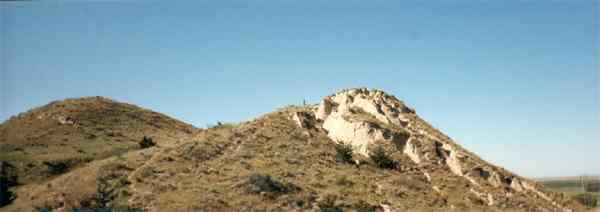
One of the reasons for the post was to keep an eye on the Indians and nearby was
a high hill
that overlooked the seasonal migratory route used by both the
Pawnee and Sioux.
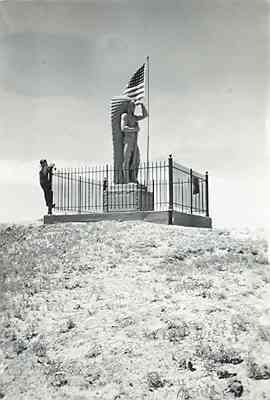
Sioux Lookout
My Great Aunt Fern
Story rode the horse up in 1931 dragging the statue
of the Indian to stand looking out over the valley below. It is the highest point
in the county and you can see for miles. She was the only one small enough to
not put addition weight on the horse yet could skillfully manage the horse at
the top with limited space to maneuver such a huge heavy item.
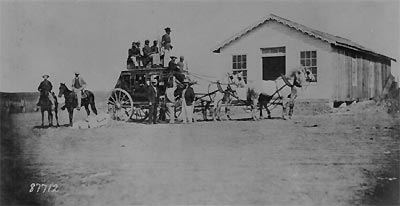
1869 Stage
The main activities of the Fort during
its 17 years of activity, were escorting stagecoaches and immigrant wagon trains;
pursuing and punishing Indians for depredations; protecting the mail, and the
telegraph.
The name of Fort Cottonwood was changed to Fort
McPherson on February 26, 1866, to honor General James B. McPherson,
who had
fallen while fighting with General W.T. Sherman against the Confederate forces
in the battle for Atlanta.
The Civil War ended in August, 1865. Nebraska became
a State on March 1, 1867
.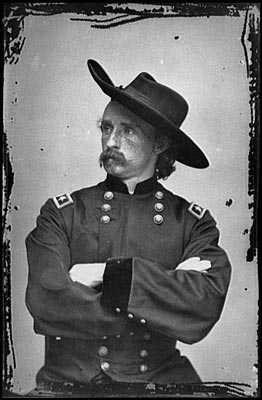
Lt
Colonel George A. Custer led the 7th Cavalry from Fort McPherson
on June
15th, 1867, for operations against Indians in Kansas.
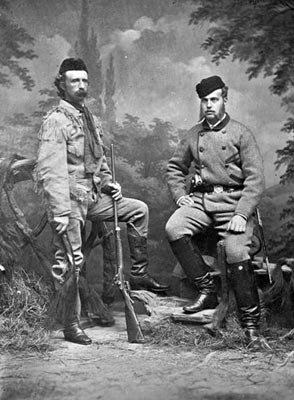
General
Phil Sheridan, Custer and Buffalo Bill Cody escorted Grand Duke Alexis of Russia
on a Buffalo hunting expedition from Fort McPherson in January of 1872.
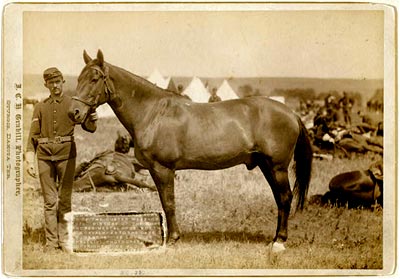
Comanche the Only Survivor of Custer's Last Stand
On June
25th, 1876, the telegraph at Fort McPherson told the news of Sitting Bull's victory
at the Little Big Horn and the end of Custer and his famous 7th Cavalry.
Fort
McPherson, after seventeen years of intense activity, with strong economic
and developmental influences for hundreds of miles, was abandoned by the Army
in 1880.
The Indian Wars continued until 1891.
My Grandmother
could remember the last Indian raid in Lincoln County in 1905.
The people
were ordered to go to the Union Pacific Railroad Roundhouse for protection.
The Indians were turned away before they reached the roundhouse. My grandma was
a very little girl
but recalled the fear and excitement vividly. They called
it the Last Indian Raid.
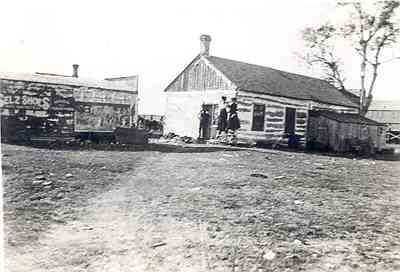
Loggy
at Maxwell c. 1897
The Fort McPherson buildings were
sold at auction in the spring of 1881.
The square logs were numbered and the
building was totally disassembled.
It was reassembled where it still stands
today. Our 'Loggy' was moved into Maxwell.
My Great Great Grandfather purchased it in 1897 to be used as a general store.
The
only other log building from the fort that I know of is now located
at the
Lincoln County Historical Museum in North Platte. It was originally bought
from the fort by John Feeny, who lived on the island just north of the fort.
The men waited until winter to move the building. This building
was not disassembled
but was dragged across the frozen Platte River
to their homestead. It remained
there for many years but finally was donated to the museum.

Our Loggy at Maxwell c. 1940
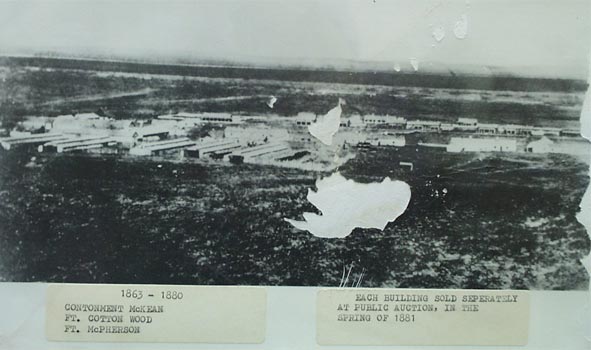
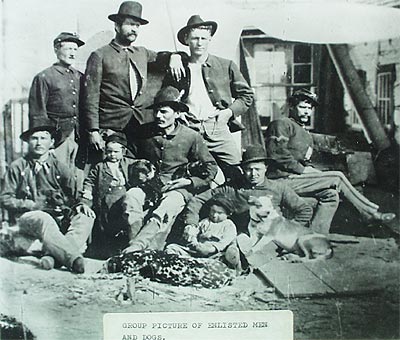
Fort McPherson Enlisted Men and Dogs.
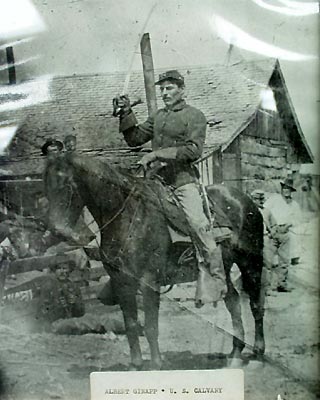
Pictured at Fort McPherson Albert Ginapp
Ginapp is a local family
name from Brady.
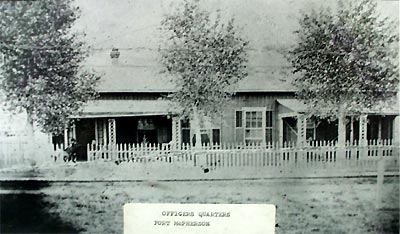
Officers Quarters at Fort McPherson
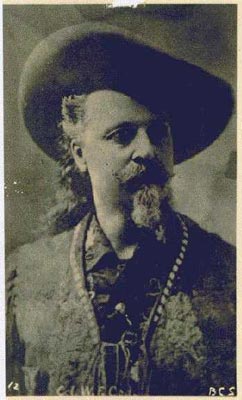
Buffalo Bill
Buffalo Bill was another piece of local
color, he was a great horseman. My Great Great Grandfather Lewis
bought horses
from him and said, "If Bill sold you a horse you could be sure that it was
a good horse".
His favorite horse that he ever owned was one he bought
from Bill Cody.
He was a highly trained Tennessee Walker named Cody.
Cody
was badly injured in an accident and was render unusable
but my Great Great
Grandfather kept him anyway.
My Great Great Grandmother on the other hand
was not too fond of Bill,
as she said he did not treat his wife right and
was always quite a ladies' man.
Fort McPherson National Cemetery
![]()

#76 ~ Unknown Indian Scout
There are 584 unknowns.
Typically the headstones
or boards were shipped with the caskets
from the cemeteries of the Army Posts
that were relocated to Fort McPherson National Cemetery.
In many cases the
boards which typically contained names and dates, were blank by the end of the
19th century.

#258
Spotted Horse
Spotted Horse, a noted Pawnee Indian Scout,
was killed by a Sioux.
He is buried in grave # 258 near the center of section
C.
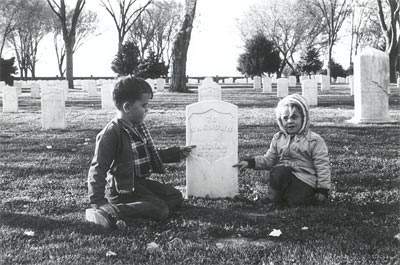
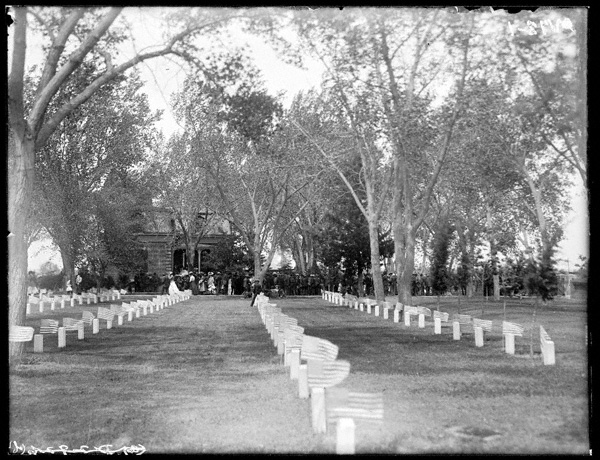
Memorial
Day at Fort McPherson
|
Cemeteries
of the Listed Army Posts were relocated | |
| Fort Halleck, Wyoming | December 1878 |
| Fort Hartsuff, Nebraska | November, 1881 |
| Fort Sanders, Wyoming | May 4, 1883 |
| Fort Fetterman, Wyoming | May 4, 1883 |
| Fort Hall, Idaho | May 19, 1883 |
| Camp White River, Colorado | January 8, 1887 |
| Independence Rock, Wyoming | January 11, 1888 |
| Fort Kearney, Nebraska | 1890 |
| Fort Sedgwick, Colorado | 1891 |
| Fort Bridger, Wyoming | May 29, 1891 |
| Fort Laramie, Wyoming | June 13, 1891 |
| Fort Hale, South Dakota | July 30, 1891 |
| Fort Crawford, Colorado | December 4, 1891 |
| Fort Lewis, Colorado | December 10, 1891 |
| Fort McPherson, Nebraska | 1892 |
| Fort Steele, Wyoming | April 8, 1892 |
| LaBonte P.O., Wyoming | May 26, 1896 |
| Fort Atkinson, Nebraska | March 1905 |
| Old South Pass, Wyoming | March 16, 1907 |
| Baggs, Wyoming | June, 1909 |
| Fort Mitchell, Nebraska | July, 1915 |
| Fort Sidney, Nebraska | August 10, 1922 |
| Fort Robinson, Nebraska | July 22, 1947 |
|
(This information was taken from an old flyer put out by the DVA) | |
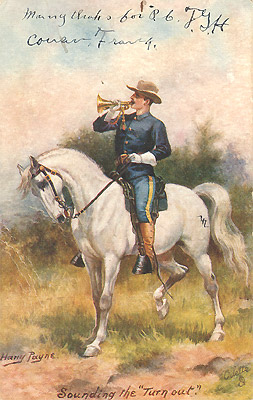
Old
Time Photographs & History
My Family History and the History of the town
of Maxwell, Nebraska
| My
Family History From Maxwell, Nebraska. The early years from the 1800's |
Maxwell,
Nebraska More of the Town ~ Early Years |
| Maxwell,
Nebraska More Recent Years |
Maxwell
School The School and Early Class Photos |
| The
Lewis Ranch History From Doylville, Colorado The early years from the 1800's. |
| Email
me Here | ||
All graphics and poems on this site should be considered copyrighted
to their original artists.
To the best of my knowledge photographs on this
page were taken and copyrighted by family members,
and some are public domain
from the Library of Congress.
A.Olsen
This site was created in 1999-2009 by A. Olsen ęCopyright 1999-2009, A. Olsen.
All Rights Reserved.
No part of
this site or any material within this site may be used without the expressed written
permission from the author.
